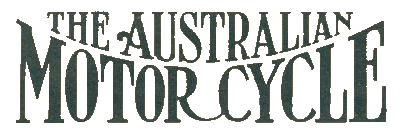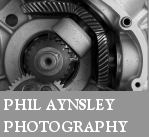


Manufactured by the Finlay Bros, 322 Elizabeth St Melbourne.
James Finlay began building bicycles named "The Barb" in 1869. The firm built motorcycles under The Barb brand and later as the GEM. The engines were from Georg E. Mathiasen of Copenhagen and were imported between 1904 and 1909. It is believed that the Finlay Bros firm continued motorcycle manufacture until 1914. An image in the Saward collection thought to be of the Finlay workshop c1908 shows two motorcycles.
They also built the "Floater" sidecar.
Bob Finlay was actively involved with motor pacing, and also competed in motorcycle races.
In 1916 the firm sold Excelsior and James motor-cycles, and in 1919 advertised B.S.A. For 1920, Cleveland and Villiers were added, and Henderson made an appearance in 1922. 1929 saw the main advertising focus as BSA which continued until at least 1936.
Postwar, they advertised Panther, Sunbeam and the Australian-made Acme.
Bicycle production continued into the 1950s.
Floater Sidecars
An Australian Production
Messrs. Finlay Bros., of Elizabeth Street, Melbourne, have developed the Australian "Floater" sidecar chassis to such an extent that it has become popular among the more critical riders. The objective which originated the idea was to devise a sidecar chassis which would provide super comfort by eliminating the road shocks from sidecar chassis and the transmitted shock to the motor cycle. The illustration accompanying this article [above] shows how a great degree of flexibility is attained. The chassis is hinged through the main leaf spring at D. A is a spiral spring, which acts as a recoil to absorb the road shocks which would otherwise be passed through the sidecar wheel. It is clearly shown by the illustration how all road shock is absorbed - through the tyre, recoil spring, cross relief spring, and through the scroll body springs.
Messrs. Finlay Bros. claim, with apparent justification, that the secret of the "Floater" success lies in the unique design of the chassis. The triple system of insulation and flexible ball sockets absorb-all road shocks and abolish strains on chassis and motor cycle. The hinged wheel cradle permits of the knockout hub axle being securely bearings at both ends, while the mudguard is securely attached. The liability of breakage encountered with overhanging axle is obviated. The full floating chassis and rear laminated spring, working in conjunction with the cushioned rigid bar connection, keep the motorcycle always at the right camber - eliminating "hanging in," which is such a detrimental and dangerous defeat in most sidecar outfits - relieve strain on connections, and guarantee cushion-like comfort. The scientific method of combining the actions of springs, hinges, and flexible ball sockets gives the necessary rigidity with the correct amount of flexibility to ensure freedom of steering, extreme durability, and the greatest efficiency. The main attachments are securely fitted below the level of the motor cycle wheel axles. The rigid bar is coupled to the saddle post. This method of attachment relieves the front forks of all side-drag, makes steering perfect, and naturally saves tyres from all excessive strains and wear. The car may be detached with the minimum of trouble in a few minutes.
We are indebted to Mr. L.R. Buckeridge, manager of the showroom and sales department of Messrs. Finlay Brothers, for the information and the illustration accompanying this article."5
The Argus, March 24, 1923, page 28.
Sources: Danish Motorcycles and Automobiles 1900-1920; aussievelos.net; Trove NLA; et al
Further reading: finlaybrothershistory.info at web.archive.org
If you have a query or information about this Australian motorcycle please contact us